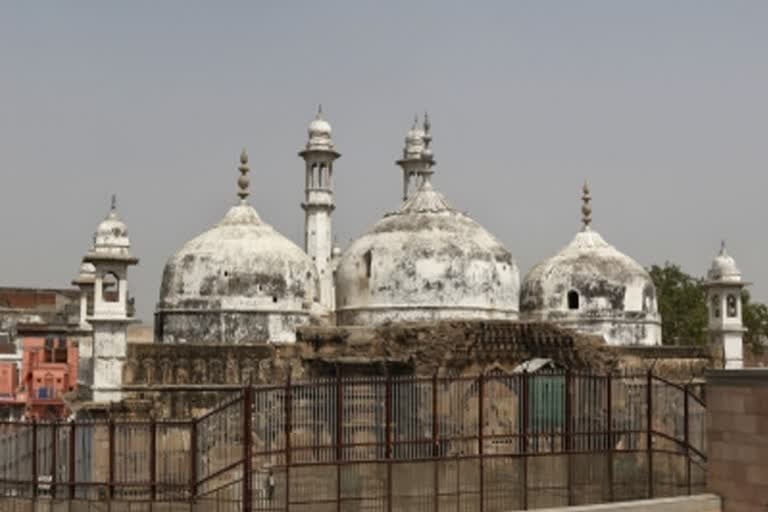Varanasi: Registering a big win for the Hindu petitioners, the Varanasi district court on Monday rejected the plea challenging petition seeking permission for daily worship of Hindu deities in the Gyanvapi mosque premises. The judge has posted the matter for further hearing on September 22.
Here is an update on the case in 10 points:
- District Judge A K Vishvesh, heading the Varanasi District Court bench, on Monday said it would continue to hear the petition filed by five women seeking the right to worship Maa Shringar Gauri on the outer wall of the mosque complex located next to the Kashi Vishwanath temple. The court consequently quashed the Anjuman Islamia Masjid committee's plea challenging the maintainability of the suit filed by the five Hindu women seeking worshipping rights.
- The Muslim petitioners, as well as AIMIM Chief Asaduddin Owaisi, have taken a flay at the court's decision, suggesting that the petitioners take the matter to the High Court, and apex court if the situation demands. "The Intezamia Committee should appeal against it, file a plea in High Court," Owisi said hours after the orders were passed.
- Meanwhile, the Hindu petitioners celebrated the verdict calling it a 'big win that laid the foundation stone for the Gyanvapi temple'.
- Following the petition sought by the 5 Hindu women, a local Varanasi court ordered a videography survey of the complex in May. The survey work was completed on May 16 and the report was presented in the court on May 19.
- After the videography survey, claims were made by the Hindu side that a structure, resembling a Shivling was found in the mosque complex. But the Masjid committee contested that it was a fountain and not a Shivling. The report of the filming was submitted to the Varanasi court in a sealed cover, but the Hindu petitioners controversially leaked details just hours later.
- The petitioner, claiming that Mughal Emperor Aurangzeb had destroyed a portion of the Kashi Vishwanath temple and had built the Gyanvapi Mosque in 1669, said Muslims have no right to occupy the Gyanvapi mosque and that their entry should be banned. However, the Anjuman Intezamia Masjid Committee had said the Gyanvapi mosque is a Waqf property and questioned the maintainability of the plea.
- On May 20, the Supreme Court transferred the case from a civil judge (senior division) to a district judge, said, 'considering the complexities and sensitivity of the issue, it is better if a senior judicial officer having an experience of over 25-30 years handles this case.
- The top court had ordered that its interim order passed on May 17 -- to protect the area where the Shivling was found and access to Muslims for namaz -- shall continue in operation till the maintainability of the suit is decided and thereafter for eight weeks to enable parties to pursue legal remedies. The order also permitted inspection, survey, and videography of the mosque's complex to collect evidence about the alleged existence of idols of Hindu deities inside the mosque, which is adjacent to the Kashi Vishwanath Temple.
- The filming inside the mosque was challenged in the Supreme Court by the Gyanvapi mosque committee, which said the filming goes against the Places of Worship Act of 1991, which maintains the religious status of any place of worship as of August 15, 1947.
- However, after the survey, the lawyers representing the Hindu side claimed that a Shivling was found at the mosque premises. They filed an application for the protection of the Shivling, whereupon the civil judge directed the district magistrate, Varanasi, to seal the area where the Shivling was sighted. It also directed the deployment of the CRPF to protect the sealed area and prohibited people from entering it.



